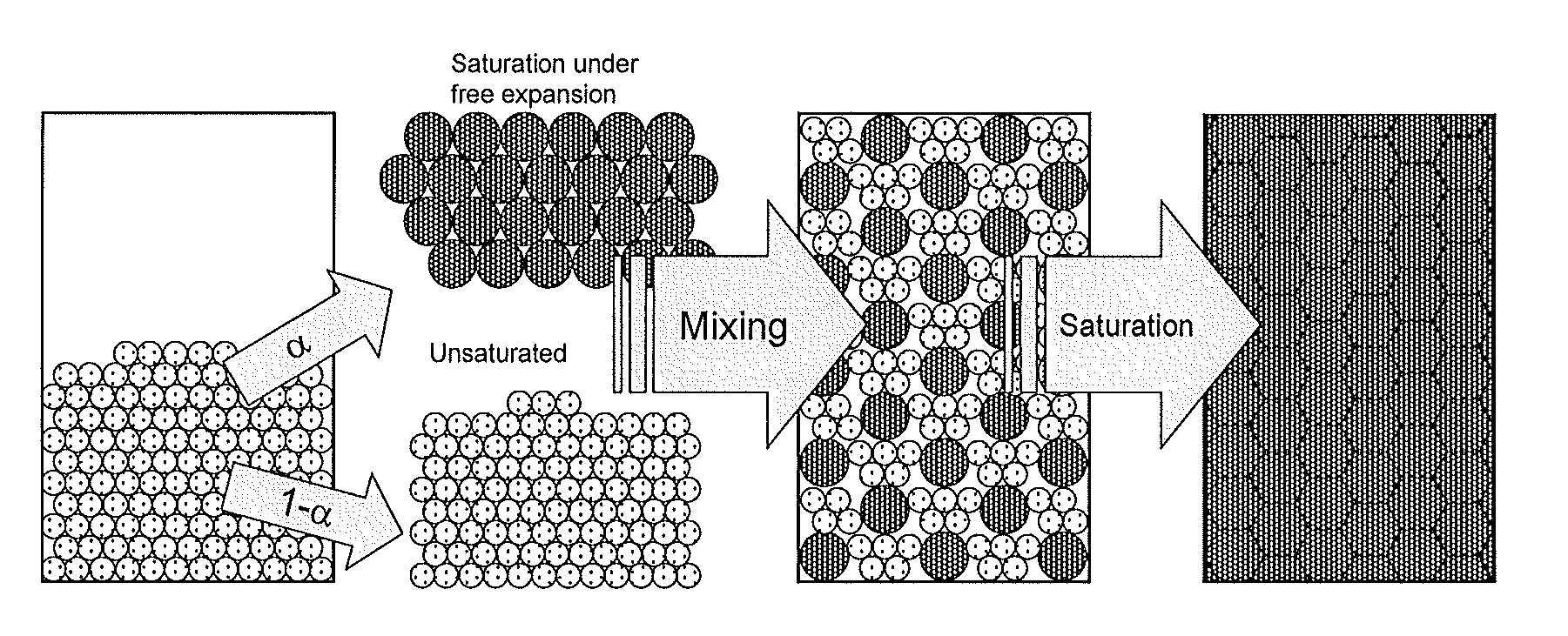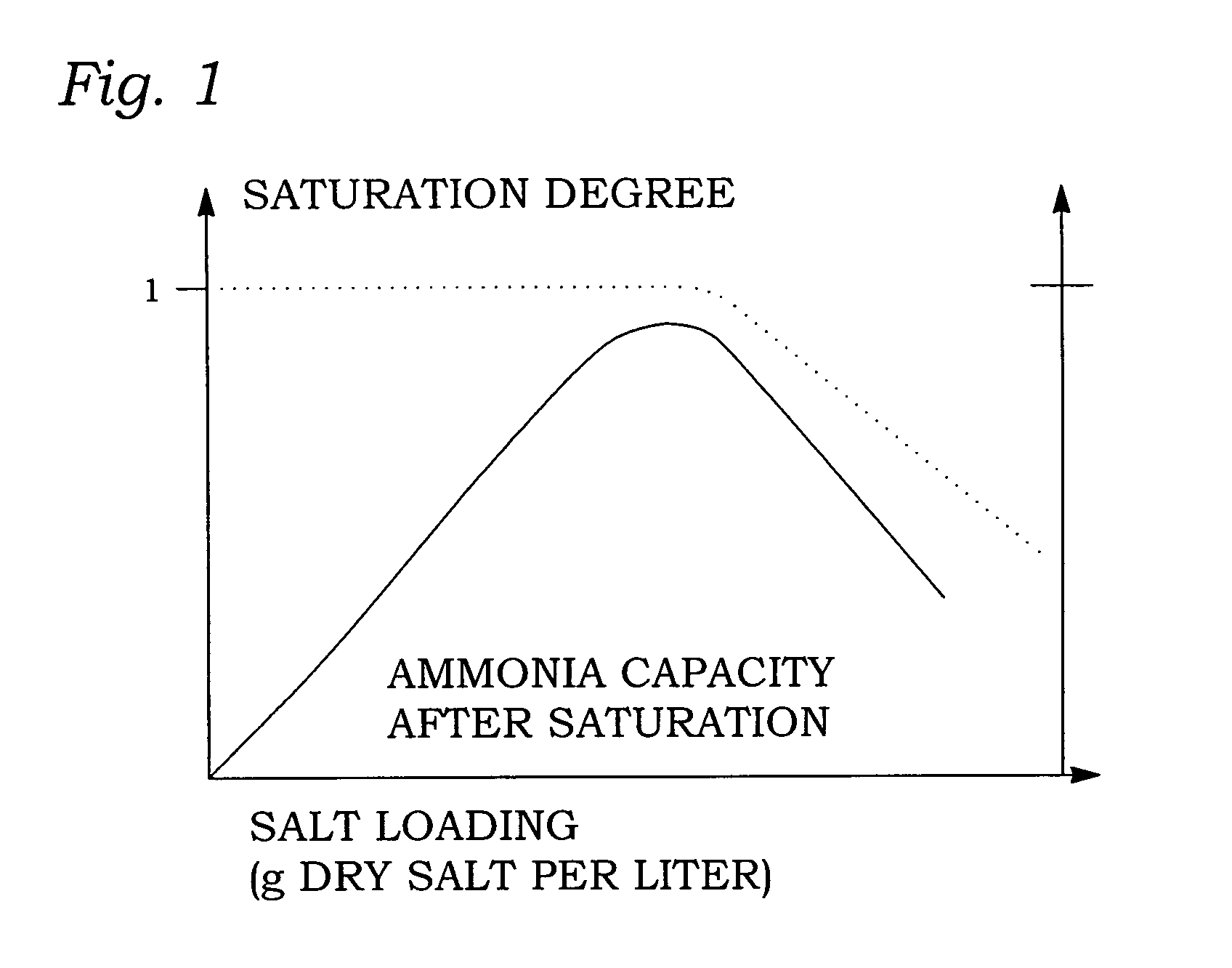Saturation of Ammonia Storage Materials in Containers
a technology for ammonia storage materials and ammonia storage containers, which is applied in the direction of ammonia handling/storage, hazardous material packaging, inorganic chemistry, etc., can solve the problems of high undesirable, deformation of containers, and non-uniform conditions of storage materials, and achieve high in-situ saturation and high volumetric ammonia storage capacity , the effect of avoiding mechanical damage to the container
- Summary
- Abstract
- Description
- Claims
- Application Information
AI Technical Summary
Benefits of technology
Problems solved by technology
Method used
Image
Examples
example 1
[0112]97.7 g of CaCl2 is placed in a container with a volume of 195 ml. The amount of CaCl2 is chosen such that when the salt is fully saturated with ammonia it forms a dense material inside the container. A pressure of 1.7 bar of ammonia is applied to the container. After 70 minutes the material exactly fills the container with 17.7 g of ammonia absorbed. During the saturation process, the unit is shaken and rotated to distribute the material. At this point in time (e.g. t=t3 in FIG. 2), the material is still far from saturated but it is ready for the final self-compaction step.
example 2
[0113]131.1 g of SrCl2 is placed in a container with a volume 195 ml. Again, 1.7 bar of ammonia is applied, and after 95 minutes the material fills the container with 32.8 g ammonia absorbed.
example 3
[0114]In some cases it is desirable to mix the salt with other substances. As an example, 130.1 g SrCl2 mixed with 10.0 g aluminum powder is saturated in a container with volume 195 ml under 1.7 bar of ammonia. After 100 minutes the material fills the container with an ammonia content of 25.9 g
[0115]In Examples 1-3 above, the container with the material therein is mechanically mixed during saturation to ensure that the degree of partial saturation is homogeneously distributed inside the container.
PUM
| Property | Measurement | Unit |
|---|---|---|
| temperature | aaaaa | aaaaa |
| volume | aaaaa | aaaaa |
| pressure | aaaaa | aaaaa |
Abstract
Description
Claims
Application Information
 Login to View More
Login to View More - R&D
- Intellectual Property
- Life Sciences
- Materials
- Tech Scout
- Unparalleled Data Quality
- Higher Quality Content
- 60% Fewer Hallucinations
Browse by: Latest US Patents, China's latest patents, Technical Efficacy Thesaurus, Application Domain, Technology Topic, Popular Technical Reports.
© 2025 PatSnap. All rights reserved.Legal|Privacy policy|Modern Slavery Act Transparency Statement|Sitemap|About US| Contact US: help@patsnap.com



